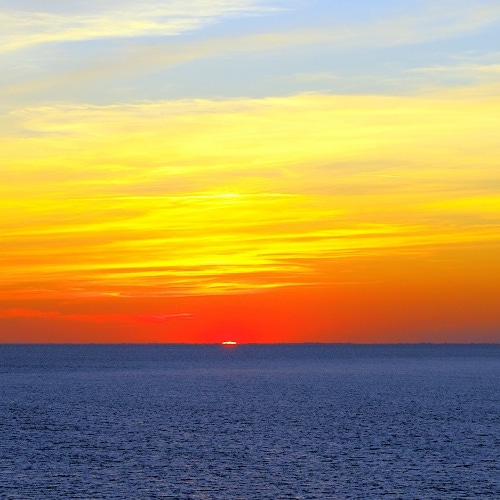The exercise involves more than 100 aircraft and ten warships, including ships that crossed the median line, the de facto maritime boundary with Taiwan.

It's been a good news-bad news-slightly better news kind of week.
The good news is the world just avoided a superpower conflict over Taiwan.
The bad news is China is right now in the middle of a live-fire military exercise on all sides of the island that is impacting commercial flights, shipping and the global supply chain.
Figure 1:  The global economy relies on shipping to keep containers – and goods – moving, so anything that impacts one of the world's busiest shipping lanes is a problem.
The global economy relies on shipping to keep containers – and goods – moving, so anything that impacts one of the world's busiest shipping lanes is a problem.
(Source: Xinhua/Alamy Stock Photo)
The slightly better news is the military drill is due to end Sunday and the incentives for China to dial down the tension might be stronger than the reasons to ramp it up.
In any event it is yet another blow to the already-fraught electronics supply chain.
The 180-kilometer wide Taiwan Strait is one of the world's busiest shipping lanes – nearly half of the world's container traffic transited through it in the first six months of the year, Bloomberg estimates. That includes of course the bulk of the world's chips, electronic components and completed products.
The military exercise, which began Thursday, involves more than 100 aircraft and ten warships, including a number of ships that crossed the median line, the de facto maritime boundary with Taiwan.
Already 11 missiles have been fired, with five of them landing in Japan's exclusive economic zone. The PLA declared multiple no-go danger zones around the island, AFP reported, disrupting commercial flights and shipping movements in the region.
China state media said one of the goals of the exercise was to show how the PLA could blockade Taiwan.
Thomas Shugart, from the Center for a New American Security think tank, said the degree of escalation remains to be seen.
"Whether China will choose to attempt such a blockade... is largely a matter of how much political and economic risk the Chinese Communist Party's leaders are willing to incur," he told AFP.
Because of China's slowing economy and the disruption caused by covid lockdowns, its tolerance for economic pain is limited. That's especially so with the party congress due to be held later this year in which President Xi will seek to extend his term in office for another five years.
The public opinion factor
A factor in the other direction, however, is public opinion. Most of the world was relieved when the visit by Speaker Pelosi ended without incident, but that does not include China's huge online army of nationalists.
They embraced the government's stern rhetoric ahead of the visit and were vocally disappointed that it took no military action to prevent or deter it. Not even China's vast monitoring and censorship machinery can sideline all of these voices, so there will be continued public demand for strong measures against Taiwan and the US.
Taiwan Semiconductor (TSMC), the world's biggest chip fab, may well be a handy indicator on just how much self-punishment China is willing to inflict.
TSMC has reduced its China revenue from 20% to 10% of its total in the last two years – but it remains an important market and, at the same time, China badly needs its output.
Want to know more? Sign up to get our dedicated newsletters direct to your inbox.
However, its boss Mark Liu likely put a target on his back when he chose to build a new plant in Arizona – effectively choosing the US ahead of China – and met with Pelosi in Taipei this week.
On Sunday, he issued a blunt warning to China in a CNN interview: "Nobody can control TSMC by force."
"If you take a military force or invasion you will render TSMC's factory non-operable because this is such a sophisticated manufacturing facility. It depends on the real-time correction with the outside world," Liu said.
Related posts:
— Robert Clark, contributing editor, special to Light Reading
Read more about:
AsiaAbout the Author(s)
You May Also Like











